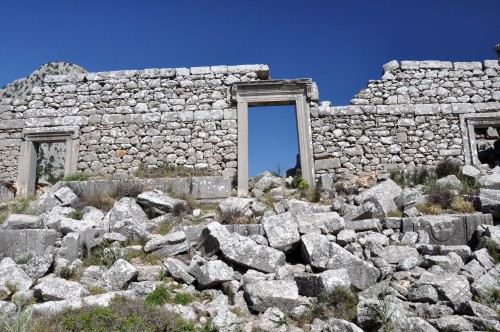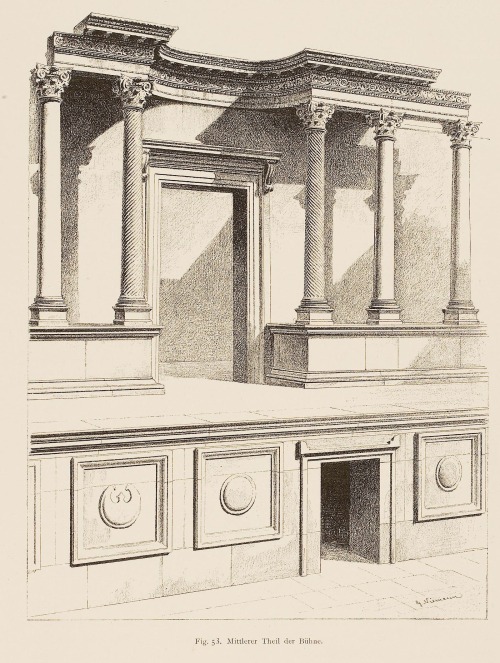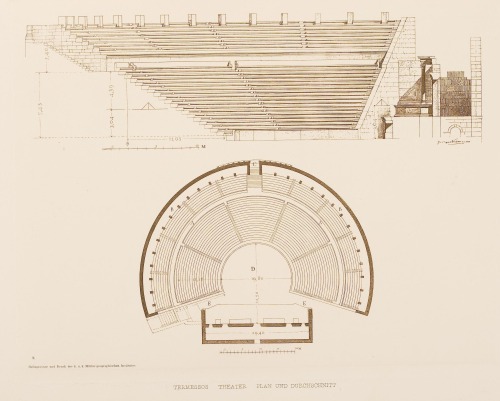#theater
Theatre of Termessos
Termessos, Pisidia, Asia Minor (Turkey)
2nd century CE
4000 - 5000 spectators
Immediately to the east of the agora lies the theatre. Commanding a view out over the Pamphylian plain, this building is no doubt the most eyecatching in all the Termessos plain. It displays most clearly the features of the Roman theatre, which preserved the Hellenistic period theatre plan. The Hellenistic cavea, or semicircular seating area, is divided in two by a diazoma. Above the diazoma rise eight tiers of seats, below it are sixteen, allowing for a seating capacity of some 4-5,000 spectators. A large arched entrance way connects the cavea with the agora. The southern parados was vaulted in Roman times, the northern has been left in its original open-air state. The stage building exhibits features characteristic of the 2nd century CE. A long narrow room is all that lies behind it. This is connected with the podium where the play took place, by five doors piercing the richly ornamented facade or scaenae frons. Under the stage lie five small rooms where wild animals were kept before being taken into the orchestra for combat.
Post link
Hyppolite Ntigurirwa has a vision for peace. After witnessing the horrors of genocide, he turned to the transformative power of art to help spread his message of peace. He formed a theater group at his school in Rwanda as a way to unite students from different ethnic groups. “We witnessed the power of performing arts to bring people together, challenging the status quo and starting the long process of social change,” he said of the experience. Since then, Hyppolite has continued to use theater as a tool for healing, reconciliation, and peacebuilding in post-conflict communities both in Rwanda and abroad.
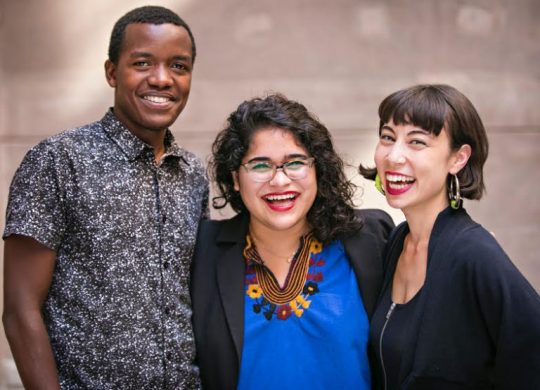
This fall, Hyppolite participated in International Art & Artists’ J-1 scholar program. He is completing an artist-in-residence program with Arts Connect International, an organization that cultivates and connects leaders in the arts field committed to cultural and social inclusion. The program has given Hyppolite the opportunity to connect with other artists and social activists, acquire key arts management skills, and further develop his artistic body of work. “My experience with Arts Connect International has been a fantastic opportunity to grow as an entrepreneurial artist and leader,” Hyppolite said. Here are some insights into Hyppolite’s time in Boston with Arts Connect International.
Can you tell us a bit about your unique perspective and background, and how it has helped you to become an arts leader?
At the young age of seven in Rwanda, a few months after surviving the genocide against the Tutsi, I was frustrated by not finding a means to tell the horror I experienced and transmitting my message to the larger community. I was not able to recount my story and transmit my message of peace until a teacher helped me create a theatre club. Since the club included children from both survivors’ families and perpetrators’ families, it wasn’t easy to start up as an inclusive community just after the genocide. However, we experienced the power of performing arts when the whole community enjoyed our performances and everyone showed their support. I continued to use theatre as a vessel for peace both in high school and college, and now I combine my experiences of genocide with sociological theories, practices, and theatre techniques to help prevent the inter-generational transmission of hatred.

Tell us more about your experience so far with Arts Connect International.
Working with Arts Connect International, as a global change agent, has been really useful to me in many ways. First of all, having been the first international artist to be selected for their Artist-in-Residence program was a tremendous asset to me in terms of accessing artistic and leadership skills, knowledge, and the experiences of all sorts of people in Boston. Arts Connect International not only provides this exposure but also provides professional and applicable guidance to having a greater impact on the community at large.
What is your favorite cultural activity to do in Boston?
Boston is a hub of people with passion for social change and innovation. There is always a lot going on in the city! There are loads of historical sites, including museums, freedom trails, and educational institutions. My favorite cultural activities in Boston include attending amazing networking and discussion events on social change and visiting different tourist spots (both historical and modern). The best part about being in Boston is organizing an event and having people attend.
What have you learned during your J-1 program?
During my residence with Arts Connect International, I have gained the extensive knowledge, skills and resources necessary to further my professional work and career as an artistic director. Among other things, I have gained experience and learnt a great deal about program management; arts project management, playwriting techniques, and sociometric techniques in theatre. I’ve also acquired strategic planning skills, leadership skills, budget and project management skills, communication skills, fundraising skills, and cross-cultural competency skills. Last but not least, I’ve learnt about monitoring and evaluation, arts education and pedagogy, creating a theory of change model, digital marketing and promotion, as well as entrepreneurial and development models for individual and organizations.
What does cultural exchange mean to you?
As far as how I interpret cultural exchange, I understand “cultural exchange” to include sharing experiences, values, knowledge, skills and customs with the mission of making the world an infinitely more inclusive and peaceful place.
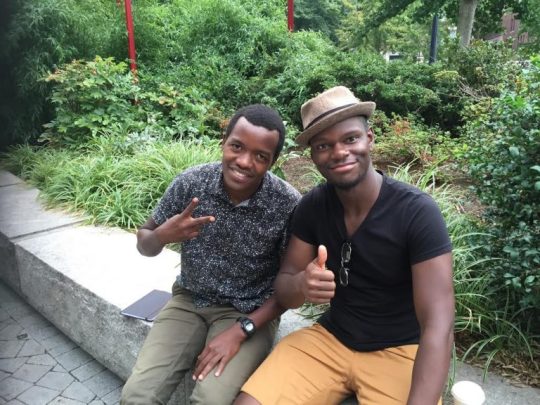
A version of this story was originally published in International Arts and Artists. Read more stories like this on the Route J-1 blog.






